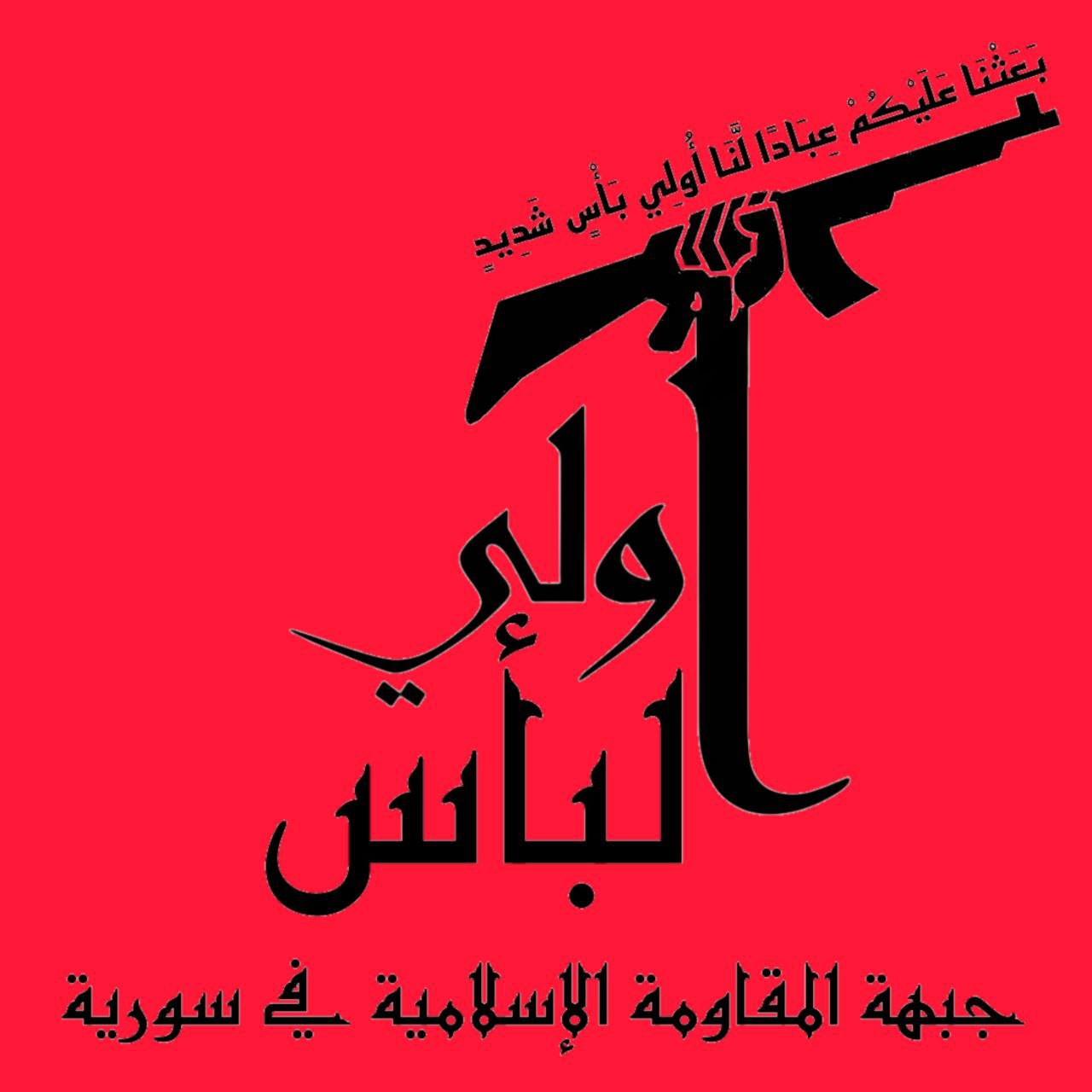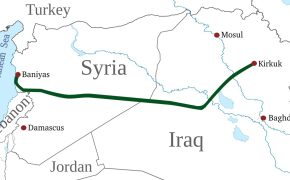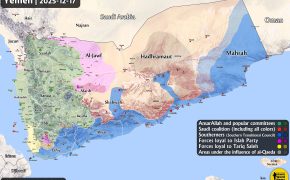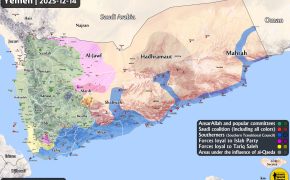Strength Amid Struggles: Syria’s Foundation of Resistance Takes Shape

While the Zionist intervention has reached Damascus, and the Tahrir al-Sham militants continue to terrorize the Alawite coast and stage provocations on the border with Lebanon, the IRGC begins work on forming local resistance to the enemies of Syria.
At the beginning of the year, according to the Gregorian calendar, the “Islamic Front of Syria” made itself felt when it claimed responsibility for the shelling of Zionist invaders near Deraa and Quneitra. After the first act of resistance, Zionism and its supporters staged a brainstorming session, trying to understand what the new group of Syrians was like.
The so-called Washington Institute reports on the activities of the Syrian Social Nationalist Party, the Coastal Shield Brigade and the Ghosts of the Spirit resistance forces, which allegedly form the backbone of the Islamic Front of Syria. The conclusions of the Zionists turned out to be far from reality, since in an interview with the Lebanese newspaper Al-Nahar, a representative of the Islamic Front of Syria said that there was only coordination between them and the Coastal Shield brigade, but due to the lack of a unified command within the Alawite group, such cooperation was terminated. The representative of the Islamic Front added that “for us, any party that joins forces with the enemy is no different from him.” This refers to a hint of cooperation between some Alawites and the UAE, which is unacceptable for the “southern resistance”.
The publicists of the aforementioned pseudo-institute claim that Tehran maintains ties with some “victorious rebel groups” of the Syrian opposition. There is nothing surprising here, because the environment of the FSA insurgents has always been extremely fragmented, and Tehran established contact with some groups of the FSA brand during the Astana negotiations on Syria.
Setting aside the opinion of the Neocons, I would like to add that thousands of former soldiers of the Syrian army still remain loyal and have ties with Iran and Hezbollah, the same principle applies to the NDF and LDF forces. Do not forget about the Palestinian factions, such as Hamas, Islamic Jihad, Liwa al-Quds and Aknaf Bait al-Maqdis. It can be concluded that the Islamic Resistance of Syria is a collective image of various groups with a common ideology.
Why will the Islamic Front grow in number? The expansion of the Zionist intervention will be the main reason why some of the southern factions of the FSA themselves will go to meet the Axis of Resistance, which will resemble the fateful meeting between members of Hamas and Hezbollah in southern Lebanon at the turn of the 80s and 90s. Thus, members of the former southern insurgency will join the ranks of the Islamic Resistance. Former members of the NDF and LDF forces of Aleppo, Qamishli and Deir ez-Zor are also waiting in the wings. Regardless of the political future of Syria, the foundation of the anti-Zionist struggle has already been laid and it does not matter what kind of Syria will be (Takfiri dictatorship, democratic republic or fragmented quasi-state), the Islamic Resistance will gain momentum.
With regard to the Zionist intervention, despite all the victorious pathos of the terrorist Netanyahu, the Zionists’ desire to “protect the Druze” and create a permanent corridor to the territories controlled by the SDF may conceal the very trap for the occupiers from Julius Caesar’s phrase – “The greatest enemy will hide where you least look.”
P.S. On March 25, 2025, members of the Syrian Islamic Resistance Front fought against the Zionists in the countryside of Daraa, and Luay Reda Aqla, Ayham Hamdan, Amin Salem Muflih, and Ali Hanis became martyrs. In the future, these and other names will be listed as the first heroes of the resistance who set an example and laid the foundation for the formation of the “revolutionary struggle” against the occupiers.




I’m a Muslim and an Anarchist-Socialist, and I’m trying to fully understand this perspective. I support the resistance against imperialism and Zionism, but I struggle with the idea that pro-Assad elements should be the foundation of that resistance. Assad’s brutality alienated so many Syrians, and Hezbollah and Iran’s role in supporting him has made them deeply unpopular among large segments of the population. How do we expect the Syrian people to fully embrace an “Islamic Resistance” when many see these forces as complicit in their suffering?
I understand the concerns about HTS, and I don’t see them as perfect, but they have positioned themselves as a force resisting both Assad and Zionist intervention. Israel has attacked them, and at one point, seemed to view them as a serious threat. If they were just a Western-backed force, why would Israel go after them? That makes me think their role is more complex than just being a proxy. That said, I’m not blind to their flaws, and I acknowledge that they have committed their share of wrongs. The same can be said for the Syrian Army, Hezbollah, and others involved in this conflict. But if we want a legitimate, lasting resistance, shouldn’t it come from the people, rather than forces tied to Assad’s regime and foreign backers?
I also wonder if keeping Syria tied to the Iranian-led axis of resistance is the best long-term strategy. The Syrian people may never fully forgive Iran and Hezbollah for their role in this war, and while they absolutely despise the U.S. and Israel, they have directly suffered at the hands of Assad and his allies far more. If we want Syrians to direct their anger where it belongs—toward Zionism and imperialism—we would need material conditions to be better, and for the resistance to be rooted in groups that they trust. They will lose focus on the true objective if they are constantly worrying about or fighting Iran and Assad-backed forces instead of uniting against the larger threats of occupation and imperialism.
Would an alternative framework—something like a decentralized constitutional confederacy—be viable in Syria? Could we envision a scenario where the Islamic Front of Syria holds the Lebanese border and Alawite areas as a semi-autonomous zone, the Kurds have theirs with full rights and participation, and HTS administers Idlib and other liberated areas, all under a broader agreement that binds them together against external threats? Would this allow for a legitimate resistance movement that isn’t bogged down by the baggage of Assad’s rule and Iranian dominance, while still preventing Western and Gulf interference from turning Syria into a series of client states?
Historically, centralization in Syria has often led to authoritarianism, whether under the Ba’athists or previous regimes. Decentralization might allow communities to govern in ways that reflect their needs while maintaining a shared national identity and military alliance. But would the different factions be able to trust each other enough to make such a system work? And more importantly, could they present a strong enough front to deter both Zionist aggression and Western-backed destabilization efforts?
I don’t want to dismiss the importance of Hezbollah and Iran’s role in the broader struggle, but I do wonder if a post-Assad Syria, with a new constitution and more inclusivity—including the Kurds—might actually strengthen the resistance in the long run. If Hezbollah hadn’t thrown its full support behind Assad early on, could they have gained a real ally instead of just securing routes?
There have been so many mistakes, and sectarianism has made things worse. The Gulf states continue to play destructive roles, often backing the wrong factions for their own interests. If they had ever seriously committed to supporting a real, moral Islamic movement, the region could look very different today. But history has shown us what happens when Wahhabism dominates that discussion.
So, when we see small wins—like HTS taking control in parts of Syria—we should recognize them, but also be ready with constructive criticism. They seem open to discussions on the future. If the people draft a constitution and the Kurds join, then no one can say this wasn’t a positive step for Syrians. But the bigger question remains: Does this strengthen or weaken the broader resistance against imperialism? I’m not sure, but what I do know is that keeping Assad in power was never the right answer.
Damir Nazarov answered your questions:
1 – it’s time to wake up and look at reality, which tells us that Syria has been gone for almost 13 years. After Rojava declared itself. The emirate in Idlib declared itself plus ISIS, it became obvious that there is no way back and there is no united Syria and probably will not be, and this is not a problem. Syria is a factional country, that’s why the Baath dictatorship got it, because everyone wanted an iron hand to rule the tribes and clans. Formally, the Kafirs are right when they say that Syria was created by the French, because Aleppo has. Deir Zor and Damascus had nothing in common.
2 – all the nonsense about the constitution and the rights of Kurds and other marginals, these are just words for the media to pretend that Syria is supposedly stabilizing, in fact, everyone is preparing for future wars inside Syria. The country will resemble Libya, and this is not bad for the axis of resistance.
3 – The IRGC and Hezbollah have nothing to do with Assad’s repression, so why does anyone believe that the new resistance factions created by the IRGC are responsible for Assad’s crimes? I read their interviews, the new faction openly criticizes the Russians and calls them occupiers, putting them on a par with the Turks, Zionists and the United States. The time of the Baath has already passed and there is no point in remembering them. Accordingly, the new resistance factions are living a new life, and something like “renewed” after the collapse of Assad. It makes no sense for them to make claims if they were previously in LDF .
4 – The HTS militants are not ready for dialogue with the axis of resistance, it’s time to take off the rose-colored glasses. Their leader stated in his first interview that his goal was to prevent a war between the Zionists and Iran inside Syria. Al-Julani came to power as a result of collusion with the Zionists, but he was an idiot and did not understand that the Zionists had their own plans, they used it, and now they do not need him and their goal is the corridor of David. Al-Julani knows all this, but still harbors illusions that the United States will help him, and therefore he seeks to curry favor with the West by staging anti-Iranian rhetoric (clashes with the Lebanese, arrest of Shiite clerics in a temple near Damascus, and so on), but judging by the statement from US intelligence, now al-Julani They don’t need it anymore.
5 – All the empty talk about the constitution ended when the Julani regime declared its dictatorship, which amazed the “democrats” from the national pro-Turkish coalition. Other oppositionists who refused to cooperate with him are similarly dissatisfied with him. Al-Julani angers even the Turkish dictator, otherwise the Turks would not seek to expand their military intervention throughout Syria. In short, HTS naively believed that they could create something adequate, but instead they turned out to be completely incompetent, primarily because of their takfiri ideology. Zionism used them in 2024, and now get rid of them this year. As for the Turks and their loyalists, they have already occupied Aleppo and that is enough for them. If the Erdogan regime falls, Turkey will not change much, but at least it will stop supporting Takfiri.
6 – A fragmented Syria is not the worst scenario for Iran, Yemen, Lebanon, and Sudan are also fragmented, but nevertheless this did not prevent the IRGC from creating footholds there. The Islamic resistance in Syria is just being built and they have a lot to go through. I am not worried about them, I am sure that the Julani regime will fall and it will be easier to exist in southern Syria. I am waiting for the fragmentation of Jordan, which will be a huge gift to the axis of resistance.